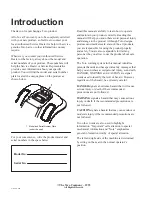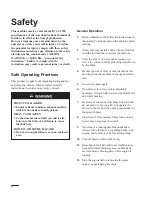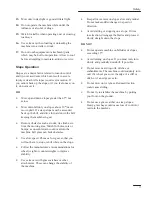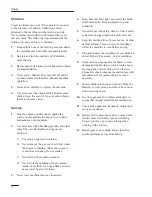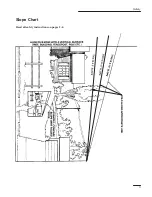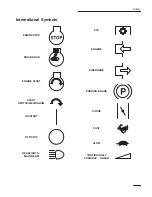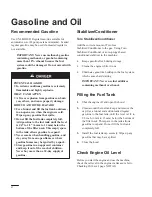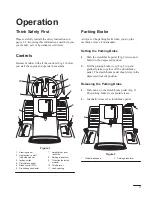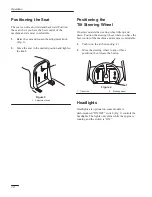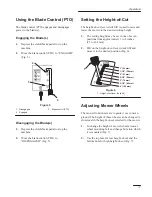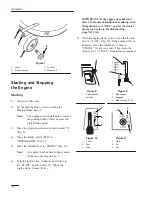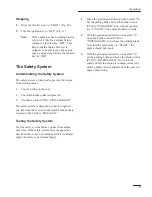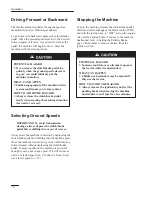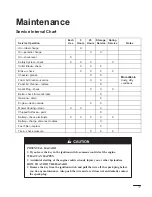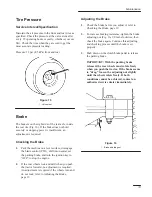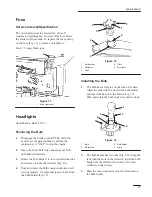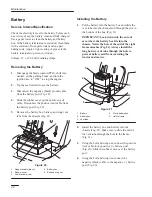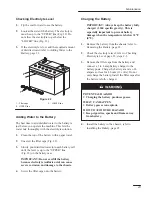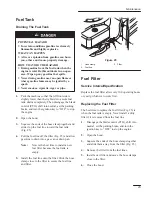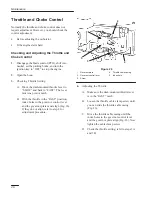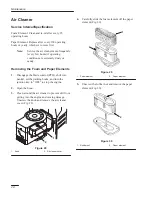
Operation
13
Stopping
1.
Move the throttle lever to “SLOW” (Fig. 10).
2.
Turn the ignition key to “OFF” (Fig. 11).
Note:
If the engine has been working hard or
is hot, let it idle for a minute before
turning the ignition key “OFF.” This
helps cool the engine before it is
stopped. In an emergency, the engine
may be stopped by turning the ignition
key to “OFF.”
The Safety System
Understanding the Safety System
The safety system is designed to prevent the engine
from starting unless:
•
You are sitting on the seat
•
The clutch/brake pedal is depressed
•
The blade control (PTO) is “DISENGAGED”
The safety system is designed to stop the engine if
you rise from the seat when the clutch/brake pedal is
released or the blade is “ENGAGED.”
Testing the Safety System
Test the safety system before you use the machine
each time. If the safety system does not operate as
described below, have an Authorized Service Dealer
repair the safety system immediately.
1.
Move the ground speed selector into neutral “N.”
Set the parking brake. Move the blade control
(PTO) to “ENGAGED.” Now turn the ignition
key to “START”; the engine should not crank.
2.
With the ground speed selector in neutral “N,”
move the blade control (PTO) to
“DISENGAGED” and release the parking brake.
Now turn the ignition key to “START”; the
engine should not crank.
3.
With the ground speed selector in neutral “N,”
set the parking brake and move the blade control
(PTO) to “DISENGAGED.” Now start the
engine. While the engine is running, release the
parking brake and rise slightly from the seat; the
engine should stop.


